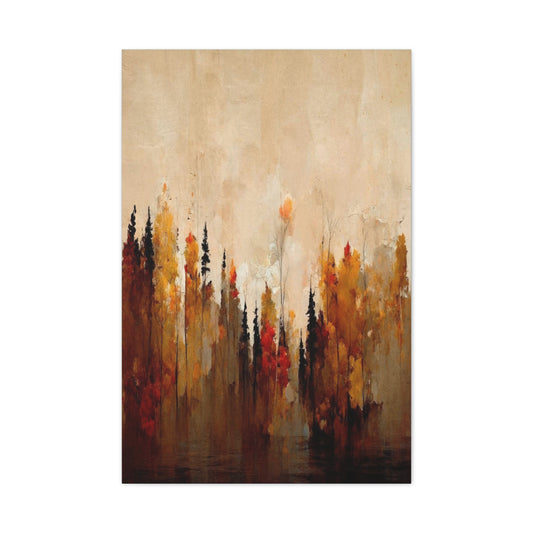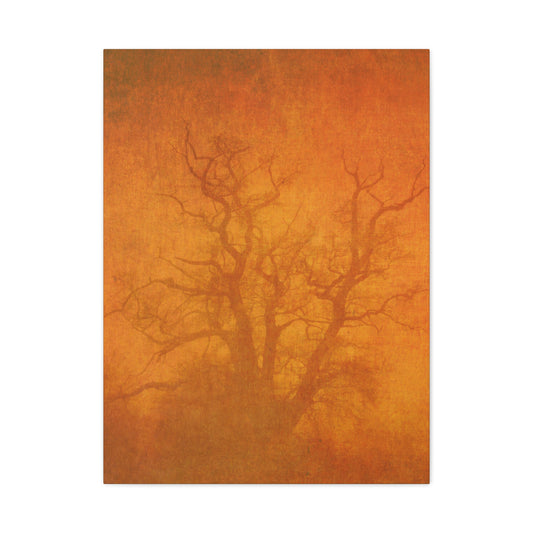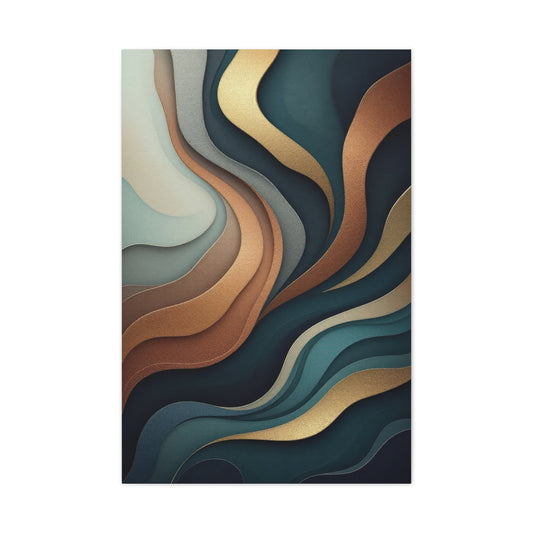Have you ever experienced that profound moment when stepping into a particular space instantly transforms your entire emotional state? The subtle shift when your shoulders naturally release their tension, your breathing patterns become more rhythmic and deliberate, and suddenly you feel more authentically connected to your inner self. This remarkable phenomenon often occurs when encountering environments that masterfully incorporate verdant design principles and nature-inspired decorative elements.
Whether manifested through sage-tinted wall treatments, sumptuous olive-hued velvet upholstery, or cascading trailing pothos specimens gracefully adorning various corners, spaces infused with green design philosophy possess an almost mystical ability to establish profound psychological grounding. This transformative power extends far beyond mere aesthetic appeal, creating sanctuaries that nurture both our emotional wellbeing and environmental consciousness.
Verdant interior design represents a harmonious fusion between the psychologically soothing properties of green coloration and mindfully sustainable, environmentally conscious design methodologies. This approach transcends the superficial application of leafy patterns or nature-themed accessories, instead focusing on cultivating deeply meaningful environments that simultaneously comfort the senses while demonstrating genuine respect for our planet's ecological systems.
This comprehensive exploration delves into the multifaceted realm of eco-conscious design, examining innovative approaches and practical applications that can completely revolutionize residential spaces through thoughtful room-by-room transformations. Each section provides detailed insights into creating harmonious environments that seamlessly blend aesthetic excellence with environmental stewardship.
The Profound Psychology Behind Verdant Design Choices
Green transcends its role as merely another attractive color option, representing instead a psychologically potent force capable of dramatically influencing human behavior, emotional states, and overall wellness. Understanding these deeper implications helps explain why this particular hue continues experiencing unprecedented popularity among contemporary designers and homeowners alike.
The scientific community has extensively documented green's remarkable therapeutic properties, demonstrating its capacity to reduce cortisol levels, lower blood pressure, and promote enhanced cognitive function. These physiological responses occur naturally when humans encounter green environments, triggering evolutionary responses developed over millennia of coexistence with natural landscapes.
Research conducted by environmental psychologists reveals that exposure to green hues can improve concentration spans by up to thirty percent while simultaneously reducing mental fatigue and enhancing creative problem-solving abilities. These findings prove particularly relevant for individuals working from home or students requiring focused study environments.
Furthermore, green's association with growth, renewal, and vitality creates subconscious connections to life's regenerative cycles, fostering optimism and emotional resilience. This psychological foundation makes verdant design choices particularly effective for creating therapeutic residential environments that support mental health and overall wellbeing.
Comprehensive Benefits of Implementing Verdant Interior Design Philosophy
Contemporary urban living often disconnects individuals from nature's restorative influence, creating stress-inducing environments that negatively impact both physical and mental health. Verdant interior design serves as a powerful remedy, reintroducing natural elements into everyday living spaces through carefully curated color palettes ranging from deep forest tones to refreshing mint variations.
These nature-inspired choices trigger biophilic responses, activating the human brain's innate affinity for natural environments. This connection promotes mental clarity, reduces anxiety levels, and enhances overall cognitive performance. Studies demonstrate that individuals living in green-tinted environments report significantly higher satisfaction levels and improved sleep quality compared to those in neutral or artificially bright spaces.
Substantial Mood Enhancement and Emotional Regulation
Extensive psychological research consistently demonstrates green's remarkable ability to reduce stress hormones while simultaneously enhancing feelings of tranquility and emotional balance. Color therapy practitioners have long recognized green's unique capacity to stabilize mood fluctuations and promote sustained emotional equilibrium.
Unlike stimulating colors that can create agitation or overwhelming sensations, green provides gentle psychological support without causing overstimulation. This makes verdant design choices particularly beneficial for individuals managing anxiety, depression, or high-stress lifestyles. The calming influence of properly implemented green color schemes can significantly improve emotional regulation and overall psychological wellbeing.
Advancing Environmental Sustainability and Conscious Living
Authentic verdant interior design extends beyond color selection to encompass comprehensive sustainable practices that minimize environmental impact while creating beautiful living spaces. This approach emphasizes utilizing recycled materials, low-volatile organic compound paints, energy-efficient lighting systems, and ethically sourced furnishings.
By choosing eco-friendly alternatives, homeowners contribute to reducing carbon footprints while supporting manufacturers committed to sustainable production methods. These choices demonstrate environmental stewardship while creating healthier indoor air quality and reducing exposure to harmful chemicals commonly found in conventional building materials and furnishings.
Remarkable Versatility Across Diverse Design Aesthetics
Green's extraordinary adaptability allows seamless integration into virtually any design philosophy or aesthetic preference. Whether embracing rustic farmhouse charm, sophisticated minimalist elegance, vibrant maximalist expressions, or traditional classical styles, green serves as an excellent foundational element or accent color.
This versatility stems from green's position on the color spectrum, naturally complementing both warm and cool tones while providing sufficient depth to support various decorative approaches. From subtle sage undertones to bold emerald statements, green offers endless possibilities for creative expression while maintaining psychological benefits.
Essential Components of Masterful Verdant Interior Design Implementation
Creating successful verdant interiors requires understanding the nuanced relationships between different green variations and their psychological impacts. Each shade carries distinct emotional associations and works optimally in specific contexts and lighting conditions.
Sage green represents tranquility and wisdom, making it ideal for meditation spaces, bedrooms, and areas designated for relaxation. Its muted qualities work exceptionally well in Scandinavian-inspired minimalist designs where simplicity and serenity take precedence over bold statements.
Olive green embodies warmth and earthiness, perfectly suited for creating cozy, inviting atmospheres in living areas and dining spaces. This rich variation pairs beautifully with natural wood finishes, leather upholstery, and warm metallic accents like brass or copper.
Emerald green conveys luxury and sophistication, serving as an excellent choice for formal spaces, home offices, and areas where making impressive statements is desired. This jewel tone works particularly well when paired with gold accents and rich textures like velvet or silk.
Mint green offers freshness and youthfulness, ideal for children's rooms, bathrooms, and spaces requiring energetic yet calming influences. This lighter variation helps smaller spaces appear larger while maintaining green's psychological benefits.
Incorporating Sustainable Materials and Ethical Sourcing Practices
Authentic verdant design prioritizes environmental responsibility through careful material selection and sourcing practices. Bamboo flooring represents an excellent sustainable option, offering durability comparable to traditional hardwoods while regenerating significantly faster than conventional timber sources.
Rattan and wicker furnishings provide natural texture and visual interest while supporting artisan communities that specialize in traditional weaving techniques. These materials age beautifully, developing unique patinas that enhance their character over time.
Jute rugs offer natural fiber alternatives to synthetic carpeting, providing excellent texture and durability while remaining completely biodegradable at the end of their useful life. These natural floor coverings contribute to improved indoor air quality by avoiding off-gassing associated with petroleum-based materials.
Reclaimed wood finishes not only prevent valuable timber from entering landfills but also provide unique character and history that cannot be replicated through new materials. Each piece tells its own story while contributing to sustainable design practices.
Mastering Biophilic Design Integration Principles
Biophilic design represents a fundamental aspect of verdant interior philosophy, focusing on human beings' innate attraction to nature and natural processes. This approach extends beyond simply adding plants to include various elements that evoke natural environments and support psychological wellbeing.
Large windows and strategic glazing maximize natural light penetration while providing visual connections to outdoor environments. When architectural modifications aren't possible, mirrors can be strategically placed to reflect available natural light and create illusions of expanded space.
Water features, whether through small tabletop fountains or more elaborate installations, introduce soothing sounds and humidity that enhance indoor air quality while creating peaceful focal points. The gentle sound of moving water masks unwanted noise pollution while promoting relaxation.
Natural stone elements, whether through accent walls, fireplace surrounds, or decorative objects, provide textural contrast and earth connections that ground interior spaces. These materials offer thermal mass that helps regulate indoor temperatures naturally.
Implementing Eco-Conscious Choice Strategies
Selecting organic textiles ensures that fabrics have been produced without harmful pesticides or synthetic chemicals that could impact indoor air quality or personal health. Organic cotton, linen, hemp, and wool provide natural beauty while supporting sustainable agricultural practices.
Energy-efficient lighting systems, particularly LED technologies, dramatically reduce electricity consumption while providing superior light quality and longevity compared to traditional incandescent or fluorescent alternatives. These systems can be programmed to mimic natural circadian rhythms, supporting better sleep patterns and overall health.
Upcycled furniture represents both environmental responsibility and unique aesthetic opportunities. Restored vintage pieces often exhibit superior craftsmanship compared to contemporary mass-produced alternatives while preventing valuable materials from entering waste streams.
Room-by-Room Implementation Strategies for Verdant Interior Excellence
Living rooms serve as central gathering spaces where verdant design principles can create maximum impact on family life and social interactions. The key to successful implementation involves balancing bold statements with comfortable functionality while maintaining psychological harmony.
Consider establishing a focal point through a sumptuous green velvet sectional positioned against crisp white walls, creating dramatic contrast while maintaining visual balance. This rich upholstery choice provides both comfort and luxury while demonstrating commitment to verdant design philosophy.
Complement this centerpiece with warm brass or gold floor lamps that provide both functional illumination and metallic accents that enhance green's natural richness. These warm metals create sophisticated contrast while avoiding the coldness sometimes associated with silver or chrome finishes.
Incorporate living botanical elements through carefully selected indoor palms or large-scale specimen plants that serve as natural sculpture while improving air quality. Position these elements strategically to create visual triangles and natural flow patterns throughout the space.
Ground the entire composition with handwoven rugs that blend beige neutrals with forest green accents, creating textural interest while tying disparate elements together cohesively. Natural fiber rugs provide softness underfoot while supporting sustainable manufacturing practices.
For those preferring subtler approaches, sage-colored wall treatments paired with warm wooden accents and organic linen window coverings create serene environments that support relaxation without overwhelming the senses. This approach works particularly well in smaller spaces or apartments where dramatic statements might feel oppressive.
Bold personalities might gravitate toward emerald wainscoting paired with mustard yellow accent cushions, creating vibrant contrast while maintaining sophisticated color relationships. This high-impact approach requires careful balance but can create truly memorable spaces.
Designing Tranquil Bedroom Sanctuaries
Bedrooms require special consideration when implementing verdant design principles, as these spaces must support both restful sleep and morning energy while maintaining aesthetic appeal. The goal involves creating cocoon-like environments that promote deep relaxation and emotional restoration.
Moss-green bed linens provide subtle color introduction while maintaining the softness necessary for comfortable sleep. These natural tones work harmoniously with various skin tones and create soothing visual environments that support circadian rhythm regulation.
Eucalyptus-toned wall treatments offer gentle color saturation without overwhelming the senses, particularly important in spaces where visual stimulation should be minimized. These muted shades work exceptionally well with both natural and artificial lighting, maintaining their calming properties throughout different times of day.
Soft, warm lighting becomes crucial in green bedrooms, as harsh illumination can alter color perception and create unwelcome psychological effects. Consider incorporating multiple light sources at various levels, including bedside reading lamps, ambient ceiling fixtures, and accent lighting that highlights architectural features or artwork.
Forest-themed wallpaper behind headboard areas can create immersive experiences that transport occupants to natural settings without overwhelming the entire space. This focused application provides visual interest while maintaining overall tranquility.
Botanical prints framed in warm walnut create sophisticated wall displays that reinforce nature connections while adding personal touches. These elements should be carefully curated to avoid cluttered appearances that might interfere with restful sleep.
Crafting Sustainable and Stylish Kitchen Environments
Kitchen spaces present unique opportunities for verdant design implementation, combining aesthetic beauty with functional requirements while supporting sustainable living practices. These areas require durable materials and practical layouts while maintaining visual appeal and environmental consciousness.
Sage green cabinetry represents an increasingly popular choice that provides color saturation while maintaining timeless appeal. Unlike trendy bright colors that may become dated, sage offers longevity while supporting various decorative schemes and hardware choices.
Brass cabinet handles and fixtures provide warm metallic accents that complement green cabinetry beautifully while offering superior durability compared to cheaper alternatives. These finishes develop natural patinas over time, enhancing their character and visual appeal.
Open wooden shelving creates display opportunities for attractive dishware and pantry items while reducing the need for additional upper cabinetry. This approach supports both aesthetic and functional goals while creating more open, spacious feelings in kitchen environments.
Terrazzo countertops offer sustainable surface solutions that incorporate recycled materials while providing durability and unique visual character. These surfaces resist staining and scratching while supporting various color schemes and design approaches.
Soft jade tile backsplashes provide protective surfaces while introducing subtle color variations that enhance overall design cohesion. These natural stone or ceramic options offer easy maintenance while supporting sustainable material choices.
For contemporary interpretations, mint green cabinetry paired with classic white subway tiles and matte black fixtures creates fresh, modern aesthetics while maintaining timeless appeal. This approach works particularly well in smaller kitchens where lighter colors help create spacious feelings.
Establishing Productive Study and Reading Areas
Home offices and reading spaces benefit tremendously from verdant design applications, as green's documented ability to enhance concentration and reduce eye fatigue creates ideal conditions for intellectual pursuits and creative work.
Olive green wall treatments provide rich backgrounds that support focus while avoiding the sterility sometimes associated with traditional office environments. These deeper shades create intimate atmospheres conducive to concentrated work while maintaining visual interest.
Deep green accent chairs upholstered in durable, comfortable fabrics create dedicated seating areas specifically designed for reading or contemplative work. These pieces should prioritize ergonomic support while contributing to overall design schemes.
Natural textures through rattan reading lamps, wooden shelving systems, and organic fiber rugs introduce tactile variety while supporting biophilic design principles. These elements create sensory richness that enhances psychological comfort and creative inspiration.
Roman blinds in coordinating green shades provide privacy and light control while reinforcing color themes throughout the space. These window treatments offer superior light management compared to traditional curtains while maintaining clean, uncluttered appearances.
Vintage desk lamps and carefully selected lighting fixtures create task-specific illumination while contributing to overall aesthetic themes. Proper lighting becomes crucial in work environments, supporting both visual comfort and design goals.
Implementing Quick Transformation Strategies
Not every verdant design implementation requires comprehensive renovation or significant financial investment. Strategic accent pieces and carefully chosen accessories can dramatically transform existing spaces while maintaining budget consciousness and rental-friendly approaches.
Green cushions, throws, and area rugs provide immediate color introduction without permanent alterations. These textile elements can be easily changed seasonally or as tastes evolve while providing comfort and visual interest.
Hanging planters and vertical garden systems create living walls that improve air quality while providing natural beauty. These installations can range from simple macrame hangers to sophisticated hydroponic systems depending on available space and maintenance preferences.
Green glass vases, ceramic pottery, and decorative objects introduce color through accessories while supporting various functional purposes. These pieces can be collected gradually while building cohesive color schemes throughout homes.
Statement accent walls painted in bold green shades create dramatic focal points without overwhelming entire spaces. This approach works particularly well behind beds, dining areas, or seating arrangements where visual impact is desired.
Trailing plant installations above furniture arrangements create dreamy, organic ceiling treatments while maximizing growing space in compact environments. These living elements provide movement and natural beauty while supporting air purification goals.
Addressing Common Implementation Challenges and Practical Solutions
Many individuals express concern about overwhelming spaces with too much green coloration, leading to environments that feel unbalanced or psychologically oppressive. Understanding proper color distribution principles helps avoid these pitfalls while maintaining desired aesthetic goals.
The sixty-thirty-ten color rule provides reliable guidance for achieving balanced compositions. Allocate sixty percent of visual space to neutral tones like white, beige, or gray, thirty percent to green variations, and ten percent to accent colors such as mustard, blush pink, or gold. This distribution ensures adequate visual breathing room while maintaining color impact.
Consider varying green saturation levels throughout spaces rather than applying uniform intensity everywhere. Combine deep, rich greens with lighter variations to create visual hierarchy and prevent monotonous appearances that might feel overwhelming or claustrophobic.
Optimizing Limited Natural Light Conditions
Spaces with minimal natural light present challenges for green color implementation, as insufficient illumination can make green appear muddy or depressing rather than fresh and invigorating. Strategic approaches can overcome these limitations while maintaining desired aesthetic goals.
Lighter green variations such as mint, pistachio, or sage work significantly better in low-light conditions compared to deeper forest or emerald shades. These lighter tones reflect available light more effectively while maintaining psychological benefits associated with green coloration.
Strategic mirror placement can dramatically increase apparent natural light by reflecting and distributing available illumination throughout spaces. Position mirrors opposite windows or near light sources to maximize this effect while creating illusions of expanded space.
Artificial lighting systems designed to mimic natural daylight can supplement insufficient natural illumination while supporting healthy circadian rhythms. LED systems with adjustable color temperatures provide flexibility throughout daily cycles while supporting both aesthetic and wellness goals.
Overcoming Commitment Hesitation Through Gradual Implementation
Many homeowners feel intimidated by permanent color decisions, particularly when considering bold or unfamiliar choices like green wall treatments. Gradual implementation strategies allow experimentation without significant financial risk or permanent alterations.
Begin with easily replaceable textile elements like throw pillows, curtains, or artwork to test color preferences and psychological responses before making larger commitments. These reversible choices provide valuable learning opportunities while building confidence in design decisions.
Removable wallpaper options offer temporary wall treatment possibilities that can be changed without damaging underlying surfaces. These products have improved dramatically in quality and variety while remaining renter-friendly and budget-conscious.
Single accent walls provide opportunities to experiment with bolder color choices while maintaining overall room balance. If results prove unsatisfactory, repainting single walls requires minimal time and expense compared to entire room transformations.
Selecting Appropriate Green Variations for Specific Conditions
Different green shades perform optimally under specific lighting conditions and room orientations, making proper selection crucial for achieving desired psychological and aesthetic effects. Understanding these relationships prevents disappointing results and supports successful implementations.
Warm green variations including olive, moss, and forest tones work exceptionally well in north-facing rooms that receive primarily cool, indirect light throughout the day. These warmer undertones compensate for cool lighting conditions while maintaining psychological warmth and comfort.
Cool green variations such as mint, seafoam, and teal perform optimally in south-facing spaces with abundant warm, direct sunlight. These cooler undertones balance warm lighting conditions while preventing overwhelming brightness that might cause eye strain or psychological agitation.
Sustainable Material Selection and Environmental Impact Considerations
Authentic verdant design extends beyond aesthetic choices to encompass comprehensive environmental consciousness throughout all material selection processes. Understanding manufacturing impacts helps consumers make informed decisions that align with sustainability goals while achieving desired design outcomes.
Natural fiber textiles including organic cotton, linen, hemp, and wool require significantly less energy and chemical processing compared to synthetic alternatives while providing superior breathability and comfort. These materials biodegrade naturally at the end of their useful lives rather than contributing to persistent plastic pollution.
Locally sourced materials reduce transportation emissions while supporting regional economies and traditional craftsmanship. Stone, timber, and ceramic products sourced within reasonable distances significantly reduce carbon footprints associated with long-distance shipping and transportation.
Reclaimed and recycled materials prevent valuable resources from entering landfills while reducing demand for newly extracted raw materials. Salvaged wood, recycled metals, and repurposed furniture often exhibit superior quality compared to contemporary mass-produced alternatives.
Supporting Ethical Labor Practices and Fair Trade Initiatives
Verdant design philosophy encompasses social responsibility alongside environmental consciousness, recognizing interconnections between human welfare and ecological health. Choosing products manufactured under ethical conditions supports sustainable communities while creating beautiful interiors.
Fair trade certified products ensure that artisans and agricultural workers receive living wages while working under safe conditions that respect human dignity and environmental stewardship. These certifications provide reliable indicators of ethical production practices.
Artisan-crafted furniture and decorative objects support traditional skills while providing unique character that cannot be replicated through mass production. These pieces often improve with age while developing individual patinas and character marks that enhance their beauty over time.
Local craftsmanship reduces transportation requirements while supporting community economies and preserving traditional skills that might otherwise disappear due to industrial competition. Regional artisans often provide custom solutions unavailable through mass retail channels.
Implementing Circular Economy Principles
Circular design thinking emphasizes creating systems where materials maintain their value through multiple use cycles rather than following linear consumption patterns that lead to waste accumulation. This approach supports both environmental and economic sustainability while creating resilient design solutions.
Modular furniture systems allow reconfiguration and expansion as needs change rather than requiring complete replacement when circumstances evolve. These flexible systems provide better long-term value while reducing waste associated with fixed solutions.
Quality investment pieces designed for longevity provide superior value compared to disposable alternatives while reducing replacement cycles and associated environmental impacts. Well-constructed furniture often improves with age while developing character that enhances rather than detracts from its appeal.
Repair and restoration services extend product lifecycles while preserving embodied energy and materials already invested in existing items. Many vintage and antique pieces can be restored to contemporary functional standards while maintaining their unique character and superior construction quality.
Advanced Biophilic Integration Techniques
Successful biophilic design extends beyond visual elements to engage all senses through carefully orchestrated natural experiences that support human psychological and physiological wellbeing. This comprehensive approach creates more profound connections between occupants and natural environments.
Natural soundscapes through water features, wind chimes, or recorded nature sounds mask unwanted urban noise while creating calming acoustic environments. The gentle sounds of flowing water or rustling leaves trigger relaxation responses while supporting concentration and creativity.
Tactile natural materials including raw stone, unfinished wood, natural fiber textiles, and living plants provide sensory variety that enhances psychological comfort while supporting haptic learning and stress reduction. These materials invite touch and interaction while contributing to overall design aesthetics.
Natural fragrances through aromatic plants, essential oil diffusion, or natural materials create olfactory connections to outdoor environments while supporting emotional regulation and memory formation. Lavender, eucalyptus, and rosemary provide particularly beneficial aromatherapy effects while complementing green color schemes.
Maximizing Natural Light Penetration and Quality
Natural light represents perhaps the most crucial element of successful biophilic design, supporting both psychological wellbeing and practical functionality while enhancing color perception and overall aesthetic appeal. Strategic approaches can maximize available light while creating comfortable, functional environments.
Reflective surfaces including mirrors, polished metals, and light-colored finishes distribute natural light throughout spaces while creating brightness multiplication effects. Position these elements strategically to avoid unwanted glare while maximizing illumination benefits.
Light-filtering window treatments allow privacy control while maintaining natural light penetration throughout daily cycles. Translucent materials provide diffused illumination that prevents harsh contrasts while supporting circadian rhythm regulation.
Skylights and clerestory windows introduce natural light from unexpected angles while creating dramatic architectural features that enhance spatial character. These installations require careful consideration of thermal performance and weather sealing but provide exceptional benefits when properly executed.
Conclusion
Designing with verdant principles transcends mere visual preferences to encompass comprehensive lifestyle choices that support both personal wellbeing and environmental stewardship. This holistic approach recognizes the profound connections between interior environments and human psychological health while demonstrating respect for ecological systems that sustain all life.
Whether pursuing comprehensive verdant interior transformations or beginning with modest decorative experiments, every step toward nature-inspired design creates meaningful progress toward healthier, more sustainable living environments. These choices contribute to personal wellness while supporting broader environmental goals that benefit entire communities.
The journey toward verdant interior excellence begins with single thoughtful decisions that gradually accumulate into transformative living environments. Each plant specimen, each sustainable material choice, each color decision contributes to creating spaces that nurture human souls while respecting planetary boundaries and ecological limits.
Consider which residential area might benefit most from verdant transformation principles. Perhaps a neglected corner yearns for botanical life, or a sterile room awaits the calming influence of sage-tinted walls. The path toward verdant interior excellence unfolds one conscious choice at a time, creating sanctuaries that celebrate both human creativity and natural wisdom.




























